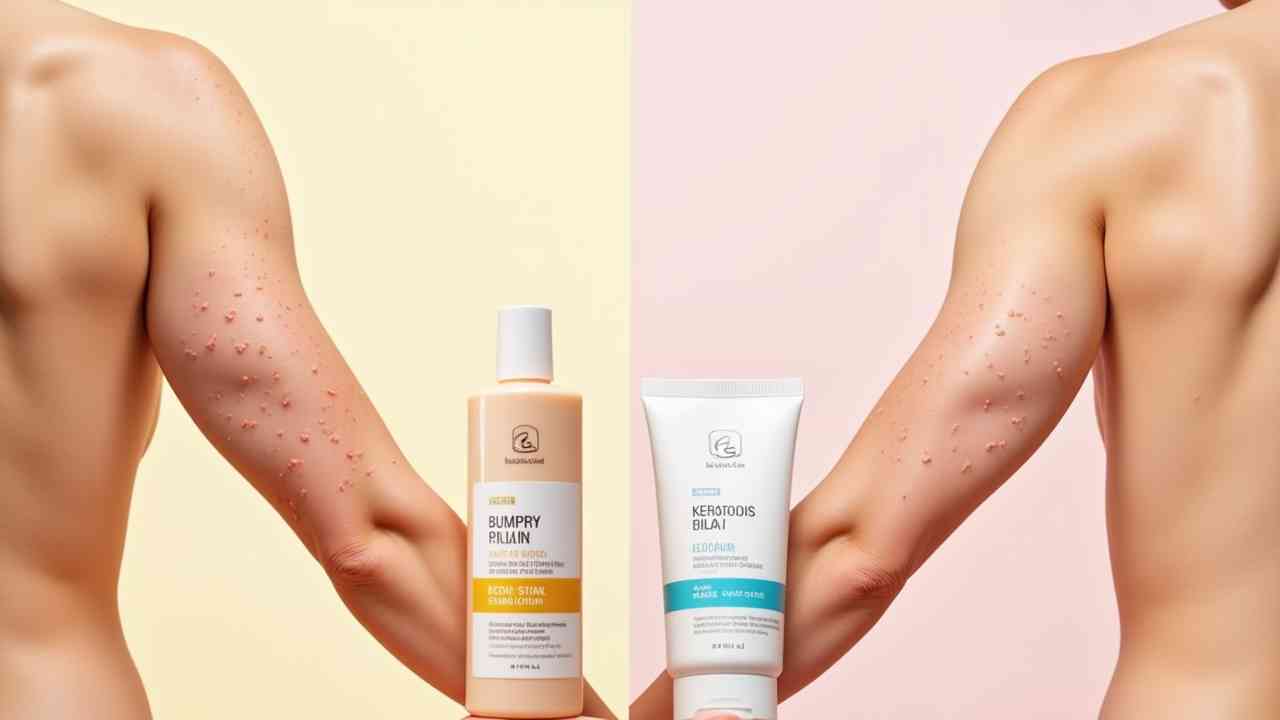
✨ How to Treat Keratosis Pilaris (A Guide to Smooth 'Chicken Skin')
✨ A Dermatologist's Guide on How to Treat Keratosis Pilaris ✨
The small, rough bumps that often appear on the back of the upper arms, thighs, and legs are incredibly common. This condition, known medically as Keratosis Pilaris (KP) or more casually as "chicken skin," can be frustrating to deal with, even though it's completely harmless.
So, how do you treat keratosis pilaris? The great news is that while you can't cure the genetic tendency for it, you can manage it very effectively. With a simple and consistent skincare routine, you can achieve a much smoother and softer skin texture. This is a perfect self-care goal as the cool, dry autumn air can make the condition worse. 🍂
🤔 First, What Causes Those Bumps?
Keratosis Pilaris is a genetic condition. It is caused by the buildup of a protein called keratin. Keratin is the same protein that makes up your hair and nails. In people with KP, the body produces too much of it. This excess keratin forms a hard plug that blocks the opening of a hair follicle. This is what creates the tiny, rough bump you can feel and see.
The condition is often worse in dry conditions because dry skin makes the bumps more prominent. It is not an infection, and it is not contagious. It is simply a quirk of your skin's texture.
- What is the Most Important Treatment Step? (Exfoliation!)
The number one strategy for treating keratosis pilaris is consistent, gentle exfoliation. The goal is to remove the dead skin and the keratin plugs. There are two main types of exfoliation, and a combination is often best.
1. Why is Chemical Exfoliation the Best Choice?
This is the most effective treatment. Chemical exfoliants use gentle acids to dissolve the "glue" that holds dead skin cells together and to break down the keratin plugs. Look for a body lotion or a wash that contains these ingredients:
- Alpha-Hydroxy Acids (AHAs): Glycolic acid and lactic acid are fantastic. They work on the surface of the skin to smooth away roughness.
- Beta-Hydroxy Acids (BHAs): Salicylic acid is the most common BHA. It is oil-soluble, so it can get deep inside the hair follicle to dissolve the keratin plug from within.
2. How can you use Physical Exfoliation?
This involves manually scrubbing the skin. It is important to be very gentle. Harsh scrubbing can cause irritation and inflammation, making the redness worse. Gentle options include using a soft washcloth, a silicone scrub brush, or a very mild body scrub with fine particles.
💧 Why is Moisturizing Just as Crucial?
Exfoliation is only half the battle. KP thrives on dry skin. Keeping your skin well-hydrated is just as important as exfoliating. A good moisturizer helps to soften the keratin plugs and keep the skin supple.
For the best results, look for a moisturizer with an exfoliating ingredient in it. Creams containing urea are fantastic for KP. Urea is a keratolytic, meaning it helps to break down the keratin plugs, while also being an excellent moisturizer. The most important tip is to apply your moisturizer to damp skin right after you get out of the shower to lock in moisture.
✅ What is a Simple, Effective Routine?
Here is a simple routine to get started:
- Wash your skin with a gentle, non-stripping body wash.
- A few times a week, you can use a wash containing salicylic acid.
- After showering, while your skin is still damp, apply a body lotion that contains an AHA (like glycolic or lactic acid) or urea.
- On the days you are not using an exfoliating lotion, use a simple, thick, hydrating cream to support your skin barrier.
☀️ What is the Most Important Rule When Using Acids?
This is a non-negotiable rule. Because exfoliating lotions contain acids (AHAs), they will make your skin more sensitive to the sun. You must be diligent about sun protection on any areas where you are using the product. Apply a broad-spectrum sunscreen with at least SPF 30 every day to your arms, legs, or any other treated areas that will be exposed to the sun. ✨